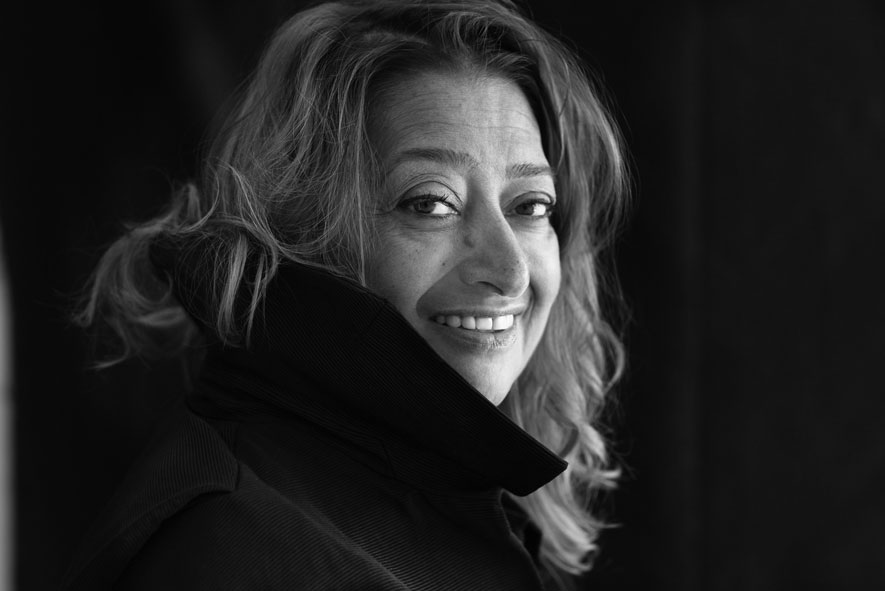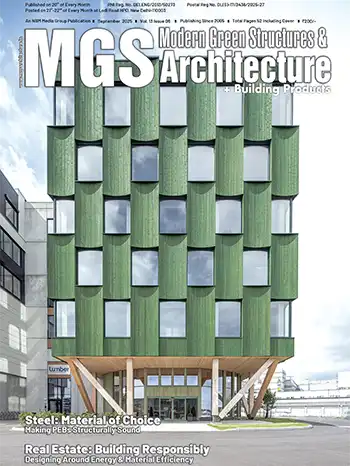
Photo Credit: Brigitte Lacombe
The legendary architect and the queen of contemporary iconic architecture, Zaha Hadid, indeed, needs no introduction being undoubtedly the most famous woman architect in the world who is consistently pushing the boundaries of architecture and urban design.
This Iraqi-British architect and the first female recipient of the Pritzker Architecture Prize in 2004 is internationally known for her built, theoretical and academic work. Each of her projects builds on over thirty years of exploration and research in the interrelated fields of urbanism, architecture and design. Besides her strong conceptual and historical knowledge, nature's love appears as a source of inspiration for Hadid's architecture. Her projects are characterized by dynamic, sinuous shapes and fragmented geometry. She has challenged the boundaries of architecture with her sensual, expressive architectural language that has become an icon for vision of tomorrow's global architecture.
The Journey So Far
Born in Baghdad, Iraq in 1950, Hadid studied mathematics at the American University of Beirut before moving to London in 1972 to attend the Architectural Association (AA) School where she was awarded the Diploma Prize in 1977. Hadid founded Zaha Hadid Architects in 1979 and completed her first building, the Vitra Fire Station, Germany in 1993. From here she began her journey in the design and architectural world. She taught at the AA School until 1987 and has since held numerous chairs and guest professorships at universities around the world including Columbia, Harvard, Yale and the University of Applied Arts in Vienna.Working with senior office partner, Patrik Schumacher, Hadid's interest lies in the rigorous interface between architecture, urbanism, landscape and geology as her practice integrates natural topography and human-made systems, leading to innovation with new technologies. The MAXXI: Italian National Museum of 21st Century Arts in Rome, the London Aquatics Centre for the 2012 Olympic Games and the Heydar Aliyev Centre in Baku are built manifestos of Hadid's quest for complex, fluid space. Previous seminal buildings such as the Guangzhou Opera House and Contemporary Arts Centre in Cincinnati have also been hailed as architecture that transforms our ideas of the future with visionary spatial concepts defined by advanced design, material, and construction processes.
The practice is currently working on diverse projects worldwide including the new Beijing Airport Terminal Building in Daxing, China, the Sleuk Rith Institute in Phnom Penh, Cambodia and 520 West 28th Street in New York. Zaha Hadid Architects' portfolio also includes cultural, corporate, academic, sporting and infrastructure projects across Asia, the Middle East, Europe, and the Americas, in addition to national institutions such as the Central Bank of Iraq and the Grand Theatre de Rabat.
Her recently completed projects include the Messner Mountain Museum Corones (2015), Oxford University's Middle East Centre (2015), Sky SOHO in Shanghai (2014), Innovation Tower at Hong Kong Polytechnic University (2014), Dongdaemun Design Plaza in Seoul (2014), Heydar Aliyev Centre in Baku (2013), Serpentine Sackler Gallery in London (2013), Library & Learning Centre in Vienna (2013), Eli & Edythe Broad Art Museum in Michigan (2012), Galaxy SOHO in Beijing (2012), Pierresvives Library and Archive in Montpellier (2012), CMA CGM Head Office Tower in Marseille (2011), London Aquatics Centre (2011), Riverside Museum in Glasgow (2011), Guangzhou Opera House (2010), Sheikh Zayed Bridge in Abu Dhabi (2010) and MAXXI Museum in Rome (2010).
Moments of Recognition
Hadid's work of the past 30 years was the subject of critically-acclaimed exhibitions at New York's Solomon R. Guggenheim Museum in 2006, London's Design Museum in 2007, the Palazzo della Ragione, Padua, Italy in 2009, the Philadelphia Museum of Art in 2011, the DAC Copenhagen in 2013 and the State Hermitage Museum in Saint Petersburg in 2015.Her outstanding contribution to the architectural profession would continue to be acknowledged by the world's most respected institutions including the Forbes List of the ‘World's Most Powerful Women' and the Japan Art Association presenting her with the ‘Praemium Imperiale'. In 2010 and 2011, her designs were awarded the Stirling Prize, one of architecture's highest accolades, by the Royal Institute of British Architects. Other awards include UNESCO naming Hadid as an ‘Artist for Peace', the Republic of France honouring Hadid with the ‘Commandeur de l'Ordre des Arts et des Lettres' and the TIME magazine included her in its list of the ‘100 Most Influential People in the World'. In 2012, Zaha Hadid was made a Dame Commander of the Order of the British Empire by Queen Elizabeth II; and in September 2015, the Royal Institute of British Architects announced Zaha Hadid as the recipient of the 2016 Royal Gold Medal-the first time a woman has won the prize in her own right.
Hadid's iconic and striking design usually stood out among the rest. She has worked on over 950 landmark projects, in every scale, around the globe and won a string of competitions which have only reconfirmed her strong place in the world of design and architecture.















